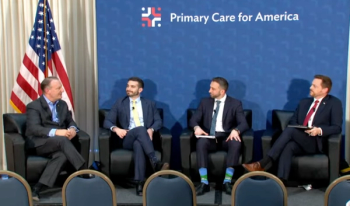
America needs a national strategy to invest in primary care
Patients around the country are being shut out of better health. It’s time to open wide the front door to care.
Primary care in the United States
Patients are told to build a relationship with a primary care clinician who gets to know them and their medical history. Yet a decades-long underinvestment in primary care – care that is proven to improve health, health equity and save our health care system money – has led to severe shortages of primary care clinicians and a surge of practice closures, closing the front door to patients’ primary partner for care and better health.
The U.S. Centers for Medicare & Medicaid Services (CMS) recently announced a new voluntary primary care payment model in select states, aimed at practices in underserved communities such as rural and Federally Qualified Health Centers. The
Much more must be done to make whole-person care a reality for everyone, starting with adequate investment in primary care through new payment models. Patients and communities urgently need greater access to robust primary care services, through this kind of bold action by policymakers.
Primary care is the backbone of organized medical practice and coordinated care. When communities have robust primary care systems in place, people stay healthier and live longer at less cost to our health care system
All of this makes America’s paltry investment in primary care even more difficult to understand. Just 5% to 7% of health care
MSSP should serve as a national roadmap to advance investment and innovation in primary care at the scale required to make a meaningful and lasting impact.
CMS has an opportunity to make an urgently needed investment in primary care through MSSP that can deliver better health for patients, more resources for physicians and teams, and avoid unnecessary costs. Without bold action that harnesses proven care methods, our primary care crisis will only worsen, and our public health and health equity goals will not be reached. It’s time to give Medicare patients better health now and pave the way for all patients to benefit.
Ann C. Greiner, MCP, is the president and CEO of the
Shari M. Erickson, MPH, is chief advocacy officer and senior vice president of governmental affairs at the
Darilyn V. Moyer, MD, MACP, is executive vice president and CEO at the American College of Physicians.
Newsletter
Stay informed and empowered with Medical Economics enewsletter, delivering expert insights, financial strategies, practice management tips and technology trends — tailored for today’s physicians.


















